How to design a functional Senior Park?
Landscape designer Arja Paula speaks about aspects to consider when designing a Senior park.
The Finnish word vanhus basically means ‘old person’, but it carries the negative implication that the person is infirm, fragile, or otherwise in a weak condition. Perhaps this is because, even as recently as a couple of decades ago, old people generally used to be weaker and sickly than they are today. Maybe this is the reason the word is rarely used today; instead, we use terms that translate as ‘the elderly’ or ‘senior citizens’.
People today are healthier than ever and live to be older than ever
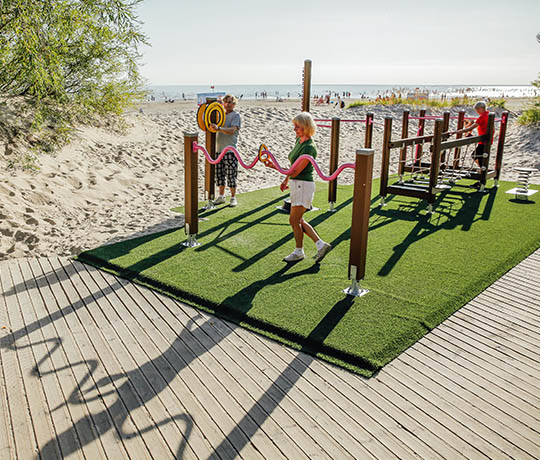
Senior Park Estonia
The majority of Finns over the age of 65 are in good shape and lead active lives. They are socially active, have hobbies, travel, and exercise.
It is our common goal that the needs of this growing population group be taken into account in the design and execution of residential districts and recreation areas. We must provide senior citizens with opportunities and means to exercise in their own neighborhoods.
After all, the importance of exercise for the health and well-being of the elderly – and indeed everyone else too – cannot be overstated.
Provide opportunities for both independent and guided exercise
So, we talk about senior parks and senior sports facilities. I prefer the term senior park because it is more of an umbrella term.
A senior park is not just for sport and exercise: it is an area with multiple functions and purposes, catering to the senses, memory-reinforcing experiences, and social activities, in addition to physical fitness. A senior park is defined as a park or recreational area designed with particular reference to mobility restrictions imposed by old age.
The purpose of such a place is to provide opportunities for both independent and guided exercise and to encourage the elderly to remain mobile. Another important function is to provide a setting for social interaction, thereby reinforcing a sense of community.
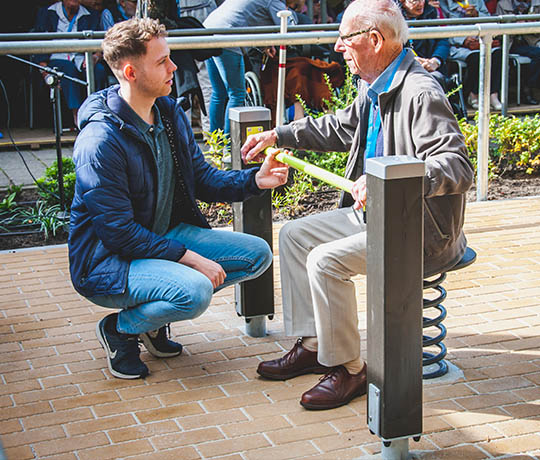
Senior Park "Therapy garden" Netherlands
Spending time together
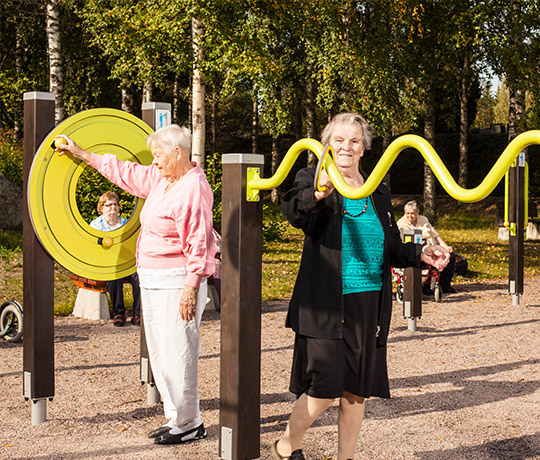
Senior Park Finland
In designing a senior park, perhaps the most important thing is the idea of comprehensive well-being and encouraging people not just to exercise but to spend time together. The park must be easily accessible and free of obstacles. It should encourage and inspire visitors of all ages, but especially senior citizens, to exercise and interact with others.
Before starting the creative planning, it is a good idea to get acquainted with one or more senior parks that have already been built and to review the experiences gained from them – what has worked and what requires further development. User experiences are valuable and important. Professionals working with the elderly, such as fitness instructors and physiotherapists, or even nurses and physicians, may have useful tips and ideas to offer designers.
Local residents and future users should be engaged in the project by being consulted on their views and wishes. The natural environment, history, and cultural values of the proposed location also impose certain parameters on the design.
Easy to access
The design of access routes, structures, and equipment should take into account mobility challenges that become more common with age, such as declining sensory ability, as well as assistive devices.
The park must be safe to move in using a wheelchair or rollator, and thus the surfaces must be smooth and the paths sufficiently wide with reasonable gradients. Instead of stairs, there should be ramps with handrails on both sides. Some paths could be equipped with a continuous handrail for the benefit of walkers with impaired balance. There should bench along the paths within visual distance of one another. The seats of the benches should be slightly higher than normal, and they should have sturdy backrests and hand rests to make it easier to sit down and get up. Space for wheelchairs should be provided beside the benches.
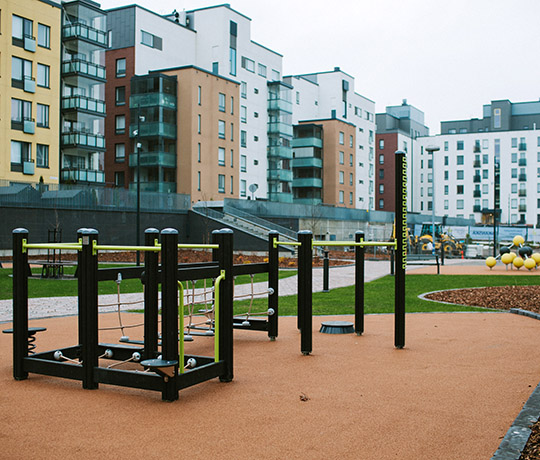
Lappset`s Senior Sport outdoor equipment in a housing association garden in Jyväskylä, Finland
Safe to use

The power of Senior Sport exercise equipment is the casual way of moving
Exercise equipment should be safe to use and have clearly printed instructions. The equipment must be easily accessible, also from a wheelchair or with a rollator. It must be designed so that people with no prior experience with exercise equipment will also be able to figure out how to use it.
Equipment with a high-quality brand that is specifically designed for senior exercise is a reliable choice. Such equipment is reliably safe to use and designed with the needs of the target group in mind, such as balance, mobility and maintaining and improving muscle tone. The manufacturer may also be consulted concerning a suitable ensemble of equipment: what is important is to put together a set that allows for a range of functions exercising various muscle groups.
The parts of the exercise equipment requiring particular attention may be coloured more brightly so that they stand out from their environment. Colour themes may be employed to help visitors orient themselves in the park, for instance by placing equipment or other elements in a specific colour along a specific route or area. Good lighting is also important. The park must be easy and safe to visit in the morning and evening, even at dark times of the year.
Planting
Planting is of course essential for a park.
Plants protect visitors from the wind and shade them from the sun. Plants divide up the space and guide visitors, besides reflecting the cycle of the seasons and pleasing the eye as they burgeon, bloom, and then take on their autumn colours.
Their shape and scent may even prompt memories from past years, and traditional plant species are therefore eminently suitable for a senior park.
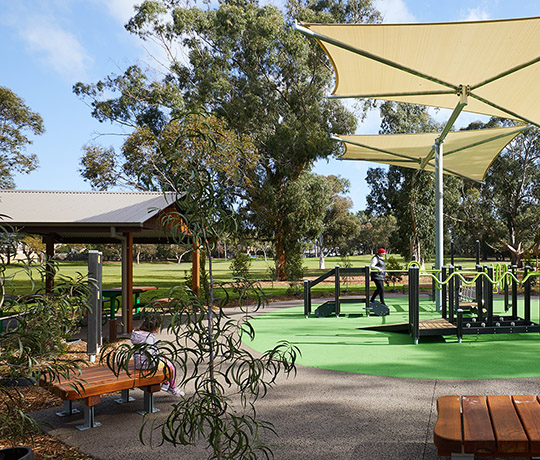
Senior Sport exercise spot in Thomas Street Park, Australia
Put simply, a good senior park is a place where elderly people like to spend time, that encourages them to remain mobile and maintain social connections, and that is close at hand.
The message we must put across to municipal decision-makers is that sufficient space should be designated for free-form exercise and outdoor life in planning and district design, taking into account the needs of various age groups.
